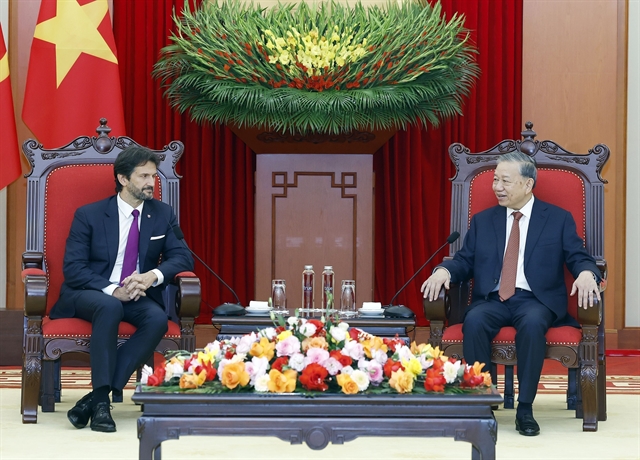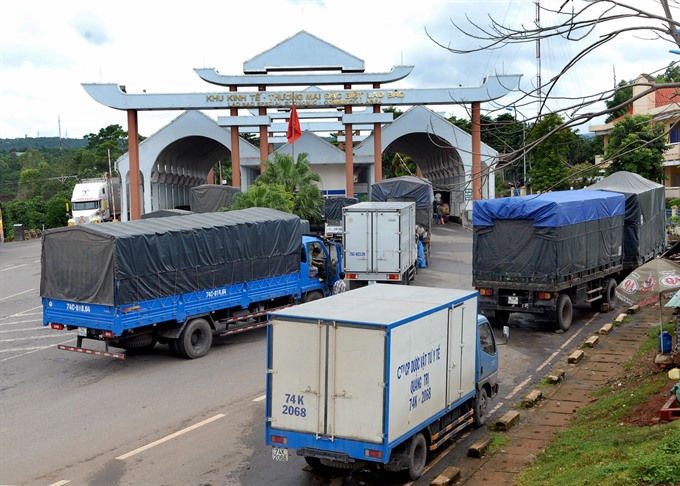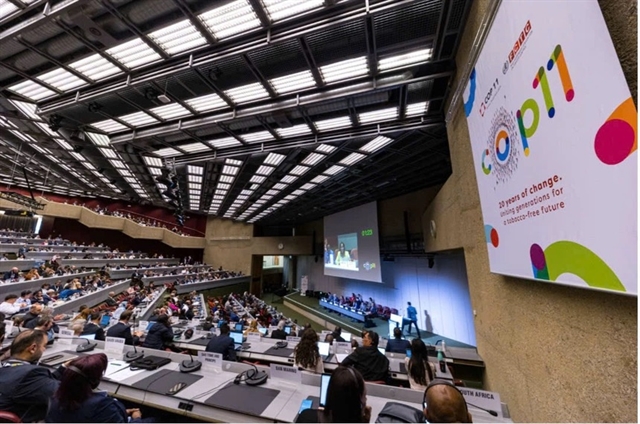 Politics & Law
Politics & Law

UN officials gathered yesterday in Hà Nội to discuss initiatives on trade facilitation for landlocked developing countries (LLDCs) in an effort to realise the UN’s development motto of leaving no one behind.
 |
| Goods being transported via the Lao Bảo special economic-trade zone in the central province of Quảng Trị. Deputy Prime Minister and Minister of Foreign Affairs Phạm Bình Minh said that Việt Nam would take steps to strengthen economic linkage and infrastructure connectivity with neighbouring countries. – VNA/VNS Photo Danh Lam |
HÀ NỘI – UN officials gathered yesterday in Hà Nội to discuss initiatives on trade facilitation for landlocked developing countries (LLDCs) in an effort to realise the UN’s development motto of leaving no one behind.
The three-day meeting on improving co-operation on transit, trade facilitation and the 2030 agenda for sustainable development in the Euro-Asia region is the first high-level UN meeting hosted by Việt Nam this year.
Lack of territorial access to the sea poses a major setback to 32 of the world’s 48 landlocked countries classified as developing nations, according to the UN. With some 478.7 million people to feed, the LLDCs are suffering an economic downturn with the average annual gross domestic product (GDP) down to 3.5 per cent in 2015 from 5.5 per cent the previous year. The group’s economy is estimated to have shrunk further to 2.6 per cent last year.
The UN Under Secretary General for the Least Developed Countries, Landlocked Developing Countries and Small Island Developing States Gyan Chandra Acharya, explained that most of the time the LLDCs have to rely on transit countries to export and import merchandise.
UN figures indicate that the average export cost of one container from an LLDC was US$3,444 in 2014 and $4,344 for an imported one, compared to $1,301 and $1,559, respectively, from countries with sea access. “(It) hinders competitiveness and discourages investment, including FDI (Foreign Direct Investment),” he said.
The FDI in LLDCs countries amounted to $24.5 billion in 2015, down 18 per cent over the previous year and as much as 33 per cent since 2011.
Secretary-General Mukhisa Kituyi of the UN Conference on Trade and Development said that the solutions for LLDCs should focus on a better, more efficient transport system to the international market.
“First, by developing, upgrading and maintaining transport infrastructure. Second, by promoting, harmonising and enabling an institutional environment for transit. And third, by forging partnerships between landlocked and transit countries and other parties, at bilateral, sub-regional, regional and global levels,” he said.
Speaking at the meeting, Việt Nam’s Deputy Prime Minister and Minister of Foreign Affairs, Phạm Bình Minh, said that Việt Nam itself has mountainous and remote areas and therefore is well aware of the economic handicaps the LLDCs face.
The country took concrete steps to strengthen economic linkage and infrastructure connctivity with neighbouring countries, particularly with the only LLDC in the Southeast Asian region which shares a border with Việt Nam, Laos.
“Laos and Việt Nam have put in place a single stop inspection model at the Lao Bảo–Dansavanh border checkpoint on the East-West Economic Corridor and will apply this model at all border check points between the two countries,” Minh said.
Việt Nam and Laos - two member states of the Association of Southeast Asian Nations (ASEAN) - were also working to enable Laos to access Việt Nam’s Vũng Áng sea port as a gateway to ASEAN and the international market, as well as to build a Vientiane-Hà Nội Highway.
In the regional arena, Việt Nam was working with Lower Mekong Basin countries to develop economic corridors linking remote regions with international sea ports, he said. The East-West Economic Corridor in particular will connect inland provinces in Myanmar, northern Thailand, Laos and central Việt Nam.
“We need to take bold and transformative steps to shift the world onto a sustainable and resilient path. Let us work together to help turn landlocked countries into land-linked countries, to move forward together and truly leave no one behind,” Minh said. – VNS




